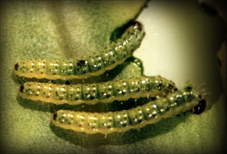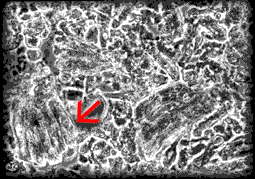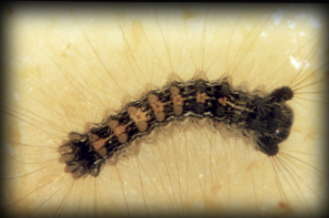Other caterpillars will starve to death rather than even try to adapt
to a new diet.
But there is a logical reason behind this strategy: |
|
Many plants contain ingredients harmful to caterpillars, like ethereal oils in cruciferae. |
 |
In the course of evolution caterpillars have adapted to feeding on these plants
by detoxifying their harmful substances. |
This very mechanism is based in part on a particular enzyme system,
with which toxic substances can be metabolized in a way, to be eliminated easily. |
 |
The enzymes are located in the mid gut, in a special celltype called columnar cells.
The arrow on the picture above marks these cells
For my doctors thesis, I'm examining these detoxification enzymes on differences
in various Austrian caterpillar species. |
 |
I am working on establishing a bio-monitoring system
which shall be based on the various abilities of their detoxification system
to metabolize anthropogenous pollutants as well.
During the last few decades, Austrian butterfly population drifted
without relevant alteration of their habitats or nourishment resources.
Variations in their enzyme equipment may explain this population drift. |
| | · |
 |